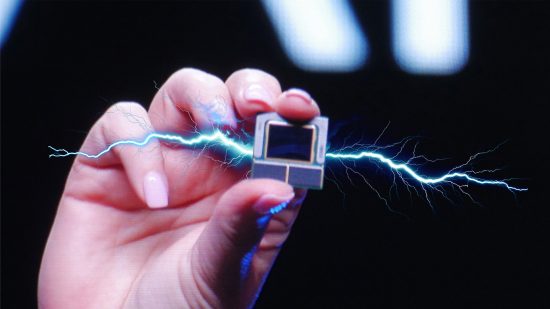A new benchmark for the upcoming Intel Battlemage GPU range has leaked, hinting that Intel’s follow-up to Intel Arc Alchemist could be a true contender for PC gamers. This particular leak involves a very low-power version of the chip design, but if its performance scales up to larger GPUs, Battlemage could live up to its name in the future graphics card war.
For those unfamiliar, Battlemage is the codename for the architecture of Intel‘s next generation of GPUs. It follows the Alchemist architecture that has been used to power the Intel Arc A770 and the graphics inside the Intel Meteor Lake range. The first-generation graphics cards based on Alchemist didn’t do enough to earn a spot on our best graphics card guide, but signs are good for its successor.
The leak comes from the database benchmark software SiSoft Sandra, which isn’t the most relevant benchmark for gamers, but it does give us a hint of this GPU’s power relative to other chips that have been tested on this software. The software’s online score database shows a test run having been performed on an HP laptop that lists its processor as an Intel Lunar Lake chip, which is the follow-up laptop CPU range to Intel Meteor Lake.
Crucially, Lunar Lake is set to use a GPU based on the Battlemage architecture, so the general purpose GPU (GPGPU) score of this chip in Sandra gives us an insight into the overall graphics grunt of that design, even if it’s not a gaming test.
Specifically, the Lunar Lake CPU’s GPU scores 2,108.15Mpix/s which compares to around 2,000Mpix/s for the Radeon 780M graphics in a Ryzen Z1 Extreme (as used in the ROG Ally and Legion Go), while the GPU in Intel’s Meteor Lake CPUs hits around 1,800 Mpix/s. So, on both accounts, Battlemage is ahead.
What’s more, this tested CPU is a much lower-power variant than the two comparison chips above. They’re rated to upwards of 35W, whereas this test chip is rated at just 17W, suggesting the company’s next generation of mobile chips could really take the fight to AMD when it comes to future handhelds – an MSI Claw 2, anyone?
As for how this might scale to larger desktop graphics cards, it’s essentially impossible to say. There can be so many other factors at play when it comes to making much larger variants of chips, as AMD reportedly found out when developing its Radeon RX 8900 XTX RDNA 4 GPUs.
Nonetheless, it’s always good to see more competition in the GPU space, though we suspect Intel won’t be providing competition at the high-end of the market to force down the price of cards like the RTX 4090. This is a part of the market that Nvidia looks set to have to itself for the moment.
